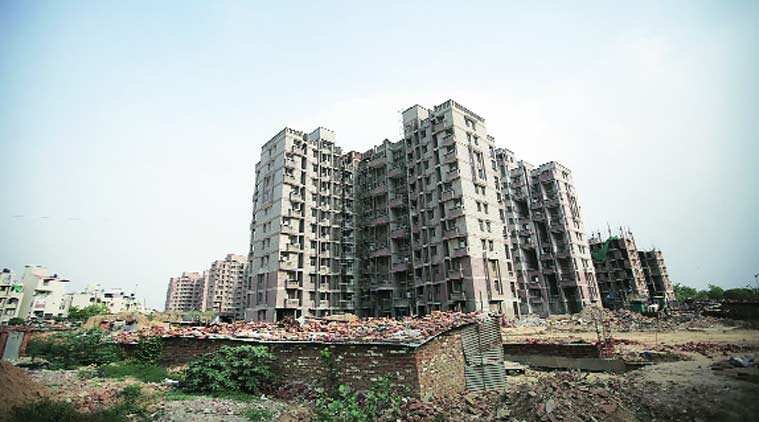The government’s capital expenditure push for the infrastructure sector notwithstanding, the rate of growth in the outstanding bank credit to the country’s core sector declined to 2.3 per cent as of January 2023 as against a growth of 10.7 per cent a year ago. One reason is that companies are increasingly relying on fund mobilisation through corporate bonds.
Total credit outstanding to the infra sector rose by just Rs 27,000 crore to Rs 11.85 lakh crore as of January 2023 from Rs 11.58 lakh crore last year, according to the latest data from the Reserve Bank of India. Growth in outstanding bank credit to the power sector — a key driver of bank credit — came down to 2.8 per cent from 4.2 per cent a year ago. In absolute numbers, it works out to Rs 6.05 lakh crore as against Rs 5.89 lakh crore a year ago.
Growth in outstanding bank credit to the road sector also declined to 8.7 per cent at Rs 2.84 lakh crore from 25.9 per cent growth (Rs 2.61 lakh crore) a year ago, RBI data shows. The ports sector bank credit showed a contraction of 11.2 per cent as of January 2023 as against a contraction of 16.1 per cent last year.
The regulatory push to borrow through the corporate bond market has reduced reliance on banks for finance and deepened the capital market, with bank borrowings having grown at a meagre two per cent annually compared to a substantial jump of around 15 per cent in the bonds outstanding. There has been a 21 per cent annual growth for bond instruments over FY12-FY22 through short-term instruments for funding working capital needs. “Majority of the bond instruments were raised by entities in the sectors such as crude oil, power, telecom, auto and steel. Thus, funding from the bond market has gained traction, although banks have remained the largest supplier of credit over the past decade,” India Ratings said.
Part of the reason for slower growth in credit to the road sector could be because of the Infrastructure Investment Trusts (InvIT) structure being created. “Under this structure, investors are raising money to prepay existing liability which is mainly bank loans. Once a road asset goes to InvITs, it goes away from the bank’s book,” said an official of a government bank who preferred anonymity. Between April 2022 and January 2023, total funds mobilised stood at Rs 6,360.34, Sebi data showed.
According to RBI data, non-food credit growth is being fuelled by retail loans, including housing and vehicle loans, which reported a 20.4 per cent growth at Rs 39.58 lakh crore as of January 2023, a rise of Rs 6.71 lakh crore from a year ago. The Union Budget 2023-24 underscored the central government’s focus on infrastructure development in India with a big increase in infrastructure spending. At Rs 12.6 lakh crore, the aggregate budgetary support for the 11 core infrastructure ministries in fiscal 2024 budget estimate (BE) was up a sharp 17% over fiscal 2023 revised estimate (RE), rating firm Crisil said in a report.
Almost a fifth (20%) of this outlay was allocated to the Ministry of Road Transport and Highways (MoRTH), making it one of the most well-funded infrastructure ministries, only behind railways, Crisil said. While bankers say is the government’s decision to hike outlays is likely to translate into a Rs 2-3 lakh crore funding opportunity for domestic banks and infrastructure- focussed non-bank lenders, banks are taking a cautious approach in extending loans.
However, growth in total outstanding credit to the industry has gone up to 8.7 per cent at Rs 32.88 lakh crore as against a growth of 5.9 per cent at Rs 30.24 lakh crore a year ago, showing a rise of Rs 2.64 lakh crore.
Bank financing to the infrastructure sector is very small, with most of the funding coming from the spending by the government, bankers said. Largely, banks’ financing is for energy transmission, roads and renewable sectors. Those projects which are completed and good are getting sold off. “The entities that are buying these projects don’t need much debt, they bring in more equity. It could be one of the reasons that infrastructure outstanding of banks have come down,” said a banker.
According to India Ratings, while high-rated borrowers would continue to scout for cheapest sources of funding in sync with shareholders interest, it ultimately will be a function of the capital market’s competitiveness with banks both in terms of interest and tenure.
The rising interest rates are set to force the sector players to rework the funding pattern. The central bank has increased the repo rate by 250 bps to 6.5% between April 01, 2022, to February 08, 2023, to manage the inflation. Weightage average lending rates of banks (WALR) on fresh loans increased by 125 bps to 8.88% from April 2022 to December 2022. WALR on outstanding loans increased by 78 bps whereas weightage average domestic term deposit rate (WADTDR) rose by 75 bps. “Given that RBI has increased rates further in February 2023, the interest rates are anticipated to continue rising for the next few months,” Care Ratings said.


